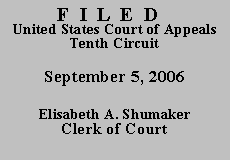

| NORMA SILCOX,
Plaintiff-Appellant, v. VIA CHRISTI OKLAHOMA REGIONAL MEDICAL CENTER PONCA CITY INC., an Oklahoma Corporation formerly known as St. Joseph Regional Medical Center of Northern Oklahoma Inc., Defendant-Appellee. |
|
Background(1)
Silcox began working for Via Christi as a certified nurse's aid in August 1998. On March 14, 2002, she injured her back while at work and left early. On her time card for that day, she reported leaving at 19:50, although she actually left some time in the morning. On March 18, 2002, Silcox visited Dr. Rebecca Bristow, a chiropractor, for the injury to her back. Dr. Bristow did not take any x-rays of Silcox's spine. She diagnosed Silcox with a spinal subluxation, however, and filled out a disability slip indicating that Silcox was temporarily totally disabled and restricted from working. On March 18 and again on March 20, Dr. Bristow performed manipulative therapy on Silcox's spine to correct the subluxation.
Dr. Bristow released Silcox to return to work on March 27, 2002. On that day, Silcox's supervisor confronted her about the discrepancy on her time card concerning her clock-out time for March 14, 2002. Silcox explained that she wrote down 19:50 by accident. Nonetheless, she was fired. Via Christi maintains that it fired Silcox for reporting a fraudulent clock-out time. Silcox argues, however, that Via Christi actually fired her for exercising her right to take leave under the FMLA and that the fraud excuse was pretextual.
On February 28, 2005, Silcox sued Via Christi in district court alleging that Via Christi interfered with her right to take medical leave and discriminated against her in violation of the FMLA. She also alleged various state law claims. Via Christi filed a motion for summary judgment seeking dismissal of the FMLA claim based on Silcox's failure to establish that she suffered from a "serious health condition" within the meaning of the FMLA. The court agreed and on November 21, 2005, issued an order granting Via Christi's motion for summary judgment, dismissing the FMLA claim and declining to exercise supplemental jurisdiction over Silcox's state law claims. This appeal followed.
Analysis
"On appeal, we review the district court's grant of summary judgment de novo, applying the same legal standards as employed by the district court. . . . Summary judgment is appropriate if there is no genuine issue of material fact and the moving party is entitled to judgment as a matter of law." B-S Steel of Kan., Inc. v. Tex. Indus., Inc., 439 F.3d 653, 660 (10th Cir. 2006) (quotations and citations omitted).
The district court dismissed Silcox's federal claim because it found that she failed to establish the applicability of the FMLA. The court explained that "a 'serious health condition' entitling an employee to FMLA leave involves either inpatient care, or 'continuing treatment by a health care provider'." Aplt. App. at 242 (citing 29 C.F.R. § 825.114). As it further explained, a "health care provider" is defined in the FMLA as "(A) a doctor of medicine or osteopathy who is authorized to practice medicine or surgery (as appropriate) by the State in which the doctor practices; or (B) any other person determined by the Secretary [of Labor] to be capable of providing health care services." 29 U.S.C. § 2611(6). The court noted that under the Secretary's regulations, chiropractors are among those "capable of providing health care services" only to the extent that the chiropractor's treatment "consist[s] of manual manipulation of the spine to correct a subluxation as demonstrated by X-ray to exist." 29 C.F.R. § 825.118(b)(1) (emphasis added). Since it was undisputed that Dr. Bristow did not take x-rays of Silcox's spine, the court concluded Dr. Bristow was not a health care provider within the meaning of the FMLA.
Silcox raises two challenges to the district court's decision. She argues that the court erred by failing to consider Dr. Bristow's qualifications under § 825.118(b)(4)(2) and that the Secretary's interpretation of health care provider with respect to chiropractors is arbitrary and capricious. We conclude that neither of these challenges has merit, and that the district court properly dismissed Silcox's claims for her failure to establish the applicability of the FMLA.(3) The judgment of the district court is, therefore, AFFIRMED for the same reasons stated in its well-reasoned decision of November 21, 2005.
Entered for the Court
Circuit Judge
*. After examining the briefs and appellate record, this panel has determined unanimously that oral argument would not materially assist the determination of this appeal. See Fed. R. App. P. 34(a)(2); 10th Cir. R. 34.1(G). The case is therefore ordered submitted without oral argument. This order and judgment is not binding precedent, except under the doctrines of law of the case, res judicata, and collateral estoppel. The court generally disfavors the citation of orders and judgments; nevertheless, an order and judgment may be cited under the terms and conditions of 10th Cir. R. 36.3.
1. In reviewing the district court's order, we view the record in the light most favorable to Silcox, the party opposing summary judgment. B-S Steel of Kan., Inc. v. Tex. Indus., Inc., 439 F.3d 653, 660 (10th Cir. 2006).
2. Under that section, "[o]thers 'capable of providing health care services' include . . . [a]ny health care provider from whom an employer or the employer's group health plan's benefits manager will accept certification of the existence of a serious health condition to substantiate a claim for benefits." 29 C.F.R. § 825.118(b)(4).
3. Silcox's attempt to invoke 29 C.F.R. § 825.118(b)(4) is specious given the Secretary's clear intent to limit coverage to chiropractic treatment that is accompanied by diagnostic x-rays. We also note that Silcox's attack on the validity of the Secretary's regulations is devoid of any authority and does not even attempt to explain why this court should not defer to the Secretary's interpretation of the FMLA, a law she is entrusted to administer. See Chevron, U.S.A., Inc. v. Natural Res. Def. Council, Inc., 467 U.S. 837 (1984).